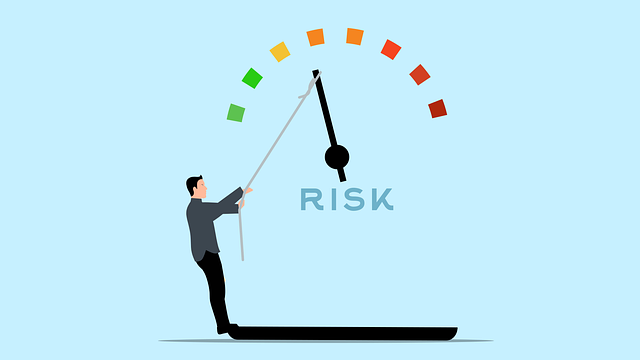Practical tips for assessing and managing investment risk
Risk tolerance is a key factor in achieving successful investments. Understanding your investment risk tolerance level and financial goals is essential to creating an investment strategy that aligns with your comfort level. Assessing your risk tolerance involves understanding your financial objectives, investment horizon, and personal circumstances. Once you have done this, I can develop an investment strategy that includes stocks, bonds, and other alternative assets. Investing with a clear understanding of your investment risk tolerance will help me create a portfolio that moves you closer to your financial goals.
Risk tolerance refers to an investor’s emotional and psychological ability to handle risk. In contrast, risk capacity refers to an investor’s financial ability to manage risk.
Six tips you can implement to manage investment risk
Here are some practical tips for assessing and managing investment risk:
- Determine your risk tolerance: As discussed earlier, understanding your risk tolerance is the first step in assessing and managing investment risk. This will help you determine the level of risk you are comfortable with and make informed investment decisions.
- Diversify your portfolio: Diversification is an effective way to manage investment risk. It involves investing in various assets such as stocks, bonds, mutual funds, and exchange-traded funds (ETFs) to spread risk across different asset classes.
- Invest for the long-term: Investing for the long-term can help reduce the impact of short-term market fluctuations on your portfolio. It also allows for compounding returns over time, which can help grow your investment.
- Monitor your investments: Regularly monitoring your investments can help you identify potential risks and make informed management decisions.
- Seek professional advice: Consulting a financial advisor or investment professional can provide valuable insights into managing investment risk. I can help you assess your risk tolerance, create a diversified portfolio, and manage risk.
- Stay disciplined: Sticking to a disciplined investment strategy is key to managing risk. This involves avoiding impulsive decisions based on short-term market fluctuations and staying focused on your long-term investment goals.
How Does Risk Tolerance Compare to Risk Capacity?
While risk tolerance and risk capacity are related concepts, they are different.
Risk tolerance refers to an investor’s emotional and psychological ability to handle risk. In contrast, risk capacity refers to an investor’s financial ability to manage risk.
An investor’s tolerance for risk is determined by their personal preferences and attitudes towards risk. For example, two investors with the same financial situation may have different risk tolerances based on their personalities, life experiences, and investment goals.
On the other hand, income, assets, liabilities, and financial obligations determine an investor’s risk capacity. For example, an investor with a high net worth and no dependents may have a higher risk capacity than an investor with a low net worth and many dependents.
Risk tolerance and risk capacity are interrelated factors that should be taken into account when making investment decisions. For instance, a conservative 25-year-old and a conservative 65-year-old may not have the same capacity for risk. Relying solely on a questionnaire to guide your investment strategy is not recommended. It is crucial to consider both tolerance and capacity to make informed investment decisions that align with your goals and circumstances.
Why risk tolerance is so important
Risk tolerance is important because it determines the level of risk an investor is willing and able to take when making investment decisions. It helps investors to set realistic investment goals, develop an investment strategy, and make informed investment decisions based on their risk profile. Without a clear understanding of one’s risk tolerance, an investor may make emotional and irrational investment decisions that could lead to significant losses and jeopardize their financial future. By understanding your risk profile, I can balance risk and reward to achieve your investment goals while minimizing the risk of losing money.
How risk tolerance works
Risk tolerance is the degree of risk an individual is willing to take when investing their money. It measures the uncertainty and variability of returns an investor can tolerate without becoming anxious or making irrational decisions.
I use questionnaires or surveys that ask about an individual’s investment goals, time horizon, financial situation, and emotional disposition to determine an investor’s risk tolerance. The responses to these questions help me determine an individual’s risk tolerance and recommend an appropriate investment strategy.
Investors should understand that risk tolerance can change over time and that it is important to regularly review your investments and adjust their risk tolerance accordingly. I can help investors evaluate their risk tolerance and make any necessary adjustments to their investment strategy.
Types of risk tolerance
There are generally three types of risk tolerance, which are:
Conservative Investors: Investors with a lower risk tolerance are willing to accept the lower returns of conservative investments. They are more concerned about the preservation of their capital than the growth of their portfolio.
Moderate Investors: Investors with an average risk tolerance are willing to accept a moderate level of risk in exchange for potentially higher returns. They typically invest in a mix of conservative and aggressive investments.
Aggressive Investors: Investors with a high-risk tolerance are willing to accept higher levels of risk in exchange for potentially higher returns. They typically invest in high-risk, high-return investments such as individual stocks, options, and futures.
Factors that Influence Risk Tolerance
Several factors can influence an individual’s risk tolerance, including:
- Age: Generally, younger people have a higher risk level because they have more time to recover from losses. Older people may have a lower appetite for risk because they have less time to recover.
- Income and wealth: People with higher incomes may have a higher risk tolerance because they have more money to invest and can afford to take more risks.
- Financial goals: Individuals with long-term financial plans, such as retirement savings, may have a higher risk tolerance because they have more time to ride out market fluctuations.
- Investment knowledge: People with a good understanding of investing and the risks involved may have higher risk attitudes than those less knowledgeable.
- Personality: Some people are naturally risk-averse, while others are more comfortable taking risks.
- Life circumstances: Life events such as marriage, having children, or buying a house may change an individual’s risk tolerance.
- Current market conditions: Market conditions can impact an individual’s risk perception. Investors may have a higher risk tolerance in a bull market, where stock prices rise. In contrast, investors may have a lower risk tolerance in a bear market where stock prices fall.
Thinking about risk in the big picture
Thinking about risk in the big picture involves taking a holistic approach to assess and manage risk in your investment portfolio. This means considering not only the risks of individual investments but also how those risks interact with one another and how they fit into your overall financial goals and investment plans.
One practical tip for considering risk in the big picture is using asset allocation to balance risk and return and spreading your investments across different asset classes, such as stocks, bonds, and cash, to achieve a mix of higher and lower-risk investments that align with your goals and provide effective risk management.
Another tip is regularly reviewing and rebalancing your portfolio to ensure it aligns with your goals and risk level. Periodically selling investments that have become overvalued or overweight in your portfolio and reinvesting the proceeds in other assets that have become undervalued or underweight.
Additionally, it’s important to stay informed about market trends and news that could impact your investments and to avoid making emotional decisions based on short-term fluctuations. Sticking to a disciplined investment strategy and maintaining a long-term perspective can help you weather market volatility and achieve your financial goals over time.
Why is portfolio diversification important for investors?
Portfolio diversification is necessary for investors for several reasons:
- Minimizes Risk: By diversifying a portfolio, an investor can reduce the portfolio’s overall risk. Because not all assets are likely to perform poorly simultaneously, if one investment performs poorly, the positive performance of other assets can minimize the negative impact on the overall portfolio.
- Maximizes Returns: Diversification can also help maximize returns. By investing in various assets, an investor can benefit from the strong performance of certain assets while minimizing the impact of poor-performing investments.
- Protects Against Market Volatility: Diversification can help protect against market volatility. A portfolio heavily invested in a single asset or sector is more vulnerable to market swings. An investor can reduce this vulnerability by diversifying across multiple assets and sectors.
- Reduces Emotional Decision Making: Investing can be emotional, and emotions can often lead to poor investment decisions. Diversification helps reduce the emotional attachment to any one investment, reducing the likelihood of making poor investment decisions based on emotion.
Overall, portfolio diversification is crucial for investors as it helps to balance risk and return, protect against market volatility, and reduce emotional decision-making.
The Risks Of Ignoring Risk Tolerance
Ignoring risk tolerance can lead to several adverse outcomes for investors. Here are some risks of ignoring risk tolerance:
- Loss of capital: Investing beyond one’s risk tolerance could lead to significant losses, especially during periods of market volatility. This could result in the loss of the investor’s capital, potentially jeopardizing their financial future.
- Emotional decision-making: Ignoring risk tolerance may cause investors to make emotional decisions during market volatility, such as panic selling during a market downturn. Emotional decision-making can often lead to poor investment decisions and negatively impact long-term returns.
- Overconfidence: Overconfidence can lead investors to believe they have a higher risk tolerance than they do, resulting in too risky investments and potentially harmful to their portfolio.
- Inappropriate asset allocation: Ignoring risk tolerance can lead to improper asset allocation, negatively impacting portfolio diversification and suboptimal investment returns.
- Inability to achieve financial goals: Investing without regard for risk tolerance can increase the likelihood that investors will be unable to achieve their financial goals, such as retirement savings or funding a child’s education.
Conclusion
Investment risk tolerance is an important part of successful investing. It is a personal decision and should be based on an individual’s goals, financial situation, and ability to withstand losses. Understanding the different levels of risk tolerance is essential to creating a portfolio that matches the investor’s goals and provides the most appropriate balance between risk and return. Ultimately, the investor should strive to achieve a balance in their investment portfolio that is consistent with their risk tolerance and long-term goals.

